 People fear dementia and Alzheimer's disease, because they are progressive diseases that nothing treats successfully. However, in the past year there have been some studies showing improvements with lifestyle changes (not cures, but for some the progression was slowed or showing some improvements).
People fear dementia and Alzheimer's disease, because they are progressive diseases that nothing treats successfully. However, in the past year there have been some studies showing improvements with lifestyle changes (not cures, but for some the progression was slowed or showing some improvements).
The latest studies found that exercise (especially aerobic execise) had some beneficial effects on those with mild cognitive impairment (MCI), Alzheimer's disease, and vascular cognitive impairment (VCI): neuropsychiatric improvements, improvements in biomarkers for the disease, and improved blood flow to the brain. From Medscape:
Physical Activity May Help Treat Dementia
New research shows that being physically active not only reduces cognitive decline and improves neuropsychiatric symptoms in patients with dementia but may actually reduce Alzheimer's disease (AD) biomarkers, including amyloid and tau protein in the brain. Exercise could also benefit patients with types of dementia other than AD, another study suggests.Some of this promising new research on exercise was presented at the Alzheimer's Association International Conference (AAIC) 2015.
Danish researchers had already presented cognition-related results of the multicenter ADEX study ...The intervention consisted of 1 hour of aerobic exercise three times a week for 16 weeks. The control group received usual care..... The analysis found that these [neuropsychiatric] symptoms improved in the 66 patients in the "high exercise"group... The NI is a 12-item questionnaire that rates, among other things, depression, apathy, agitation, hallucinations, irritability, weight loss, and sleep."We saw that the control group got worse; there was a small decline in this group, which you would expect because this is progressive disease," said Steen Hasselbalch, MD, Danish Dementia Research Centre, Copenhagen, Denmark. "But the intervention group remained at the same level and even got a little better, so at end of the intervention there was a significant difference."
The question arises of whether exercise could not just delay worsening of symptoms but actually change brain pathology.The answer, suggests other research, is yes. In a separate study presented at the AAIC 2015, researchers found decreased phosphorylated tau (P tau) in older, previously sedentary persons completing a 6-month regimen of moderate- to high-intensity aerobic exercise.
The study enrolled 70 patients aged 55 to 89 years with prediabetes as well as amnestic mild cognitive impairment (MCI)....We think they are at high, high risk for developing dementia of the Alzheimer's type." These patients were randomly assigned to the aerobic exercise group or to the stretching group. Those in the aerobic group started slowly — 10 minutes of exercise a week — and gradually built the time and intensity up over 6 weeks to the point where they were exercising 45 minutes a day, 4 days a week, at 75% to 85% of their maximum heart rate...."This group had a choice of exercises: treadmill, stationary cycling, elliptical trainer, or preapproved group classes.
The stretching group, whose members could do balance exercises, gentle yoga, and other approved classes in addition to stretching, maintained a maximum heart rate of below 35%. All exercises were adapted to the needs and limitations of individual patients and were done at a local YMCA.
The researchers looked at biomarkers in cerebrospinal fluid (CSF), including P tau protein and amyloid β 42....Most intervention trials don't show such changes in P tau. "But we saw it with exercise and no medications," said Dr. Baker. "Exercise was enough to move a biomarker that indicates the severity of the disease." It wasn't surprising, she added, that this was true only for older patients. "It may be that before age 70, you have a lot of compensatory mechanisms that help to maintain brain health, and after 70, those start breaking down."
The study also showed that the aerobic activity increased blood flow to the brain...The researchers demonstrated that the increased blood flow was in regions characteristically affected by aging and AD (ie, memory and processing). Cognitive benefits were particularly noteworthy for executive function..."Our brain imaging results are just fantastic; they show some really nice increases in blood flow in the areas of brain that support executive function and areas of the brain that normally show decreased flow for people with MCI, so it's reversing the blood flow detriment in MCI."
AD may not be the only dementia potentially treatable through exercise. Another study discussed at the meeting showed that this intervention may help those with vascular cognitive impairment (VCI). It's the first intervention trial to suggest that exercise can improve cognition in patients with confirmed VCI, said Teresa Liu- Ambrose, PhD, Canada Research Chair, University of British Columbia, Vancouver, Canada, who reported the results.The 6-month study included 71 patients aged 56 to 96 years with mild VCI of varying physical capacities. They were assigned to usual care that included a nutrition component or to an intervention of moderate-intensity walking, 3 times a week for an hour....In a subset of patients who had neuroimaging, there was "evidence of efficiency" in the brain of those who exercised, Dr Liu-Ambrose told Medscape Medical News.

 Research found that more time spent standing rather than sitting is associated with improved blood sugar, fats in the blood and cholesterol levels, and
Research found that more time spent standing rather than sitting is associated with improved blood sugar, fats in the blood and cholesterol levels, and  One study points out the difficulty of weight loss in overweight adults, because so few actually are able to get down to a normal weight or even lose a mere 5% of body weight (for example. 10 pounds for a 200 pound person or 15 pounds for a 300 pound person). The annual chance of an
One study points out the difficulty of weight loss in overweight adults, because so few actually are able to get down to a normal weight or even lose a mere 5% of body weight (for example. 10 pounds for a 200 pound person or 15 pounds for a 300 pound person). The annual chance of an  Several recent studies have found that constant exposure to high levels of air pollution has negative effects on the brain. The
Several recent studies have found that constant exposure to high levels of air pollution has negative effects on the brain. The  Several recent studies found that air pollution has a negative effect on the brain. This study of elderly women in North Carolina found that long-term exposure to higher levels of air pollution (specifically fine particulate matter smaller than 2.5 micrometers (called PM2.5) resulted in
Several recent studies found that air pollution has a negative effect on the brain. This study of elderly women in North Carolina found that long-term exposure to higher levels of air pollution (specifically fine particulate matter smaller than 2.5 micrometers (called PM2.5) resulted in
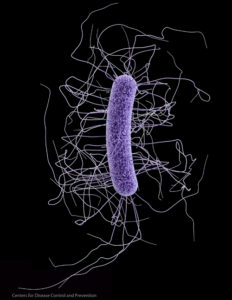 More research that supports that both more variety (diversity) of microbes and the actual mix of types of microbes are involved in a healthy
More research that supports that both more variety (diversity) of microbes and the actual mix of types of microbes are involved in a healthy  There has been much discussion recently about breastfeeding - why is it so important? Is it really better than formula? The answer is: YES, breastfeeding is the BEST food for the baby, and for a number of reasons. Not only is it nature's perfect food for the baby, but it also helps the development of the baby's microbiome or microbiota (the community of microbes that live within and on humans).
There has been much discussion recently about breastfeeding - why is it so important? Is it really better than formula? The answer is: YES, breastfeeding is the BEST food for the baby, and for a number of reasons. Not only is it nature's perfect food for the baby, but it also helps the development of the baby's microbiome or microbiota (the community of microbes that live within and on humans). 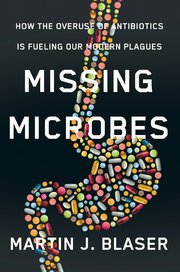
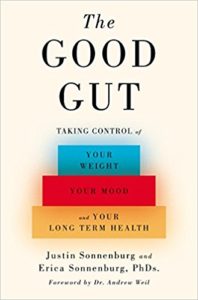
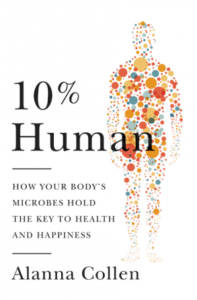
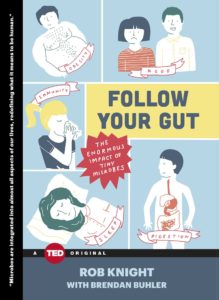 Recently several good books have been published about the community of microbes within us - our microbiota or microbiome. Originally I mainly saw the term human microbiome used everywhere. It referred to all the organisms living within and on us that are identified by their
Recently several good books have been published about the community of microbes within us - our microbiota or microbiome. Originally I mainly saw the term human microbiome used everywhere. It referred to all the organisms living within and on us that are identified by their